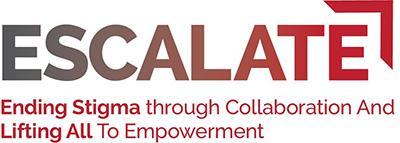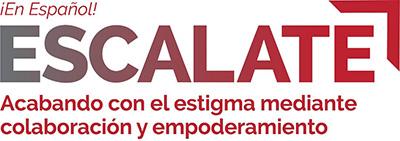- A Learning Collaborative is an initiative in which organizations come together to study and apply quality improvement methods to a focused topic area. Organizations often work together over a 12–month period or longer, participate in Learning Sessions led by subject matter and quality improvement experts, and actively engage in Action Periods between learning sessions to implement practices and strategies. Organizations report on the results and improvements that occur during the action periods and often receive expert consultation and implementation support, thereby reducing the time required to move innovations into practice. It provides the structure to foster a collaborative environment of open communication, peer support, learning, and sharing as well as opportunities for brainstorming and problem-solving to support the implementation of evidence-based practices and strategies. Through co-learning and knowledge creation, the collaborative can address gaps in practice or the translation of evidence to practice and achieve common goals.
- ESCALATE Learning Collaboratives will focus specifically on supporting and empowering the implementation of an HIV stigma-reduction initiative at your organization that is aimed at reducing the impact of HIV stigma – and other types of stigma or discrimination that can exacerbate the experience of HIV stigma – on a population that your organization serves.
- A Stigma Reduction Initiative is a formalized, comprehensive, and evidence-informed effort to reduce the impact of HIV stigma on an identified population of focus
- Stigma Reduction Initiatives are:
- Formalized by the development of an implementation and evaluation plan
- Comprehensive when they go through a series of steps to ensure that they are implementing the right activities to meet the needs of a given population
- Evidence-Informed when formative data is collected or reviewed to select a population that will benefit from the stigma reduction activities and when there is a mechanism for quality improvement that is applied throughout the implementation of the initiative.
- A population of focus is a group of people that your organization serves who are most likely to be stigmatized and/or for whom stigma has the greatest negative impact.
- Organizations accepted into the Learning Collaborative will be grouped according to various criteria, such as experience, size, or selected population of focus. They will meet virtually during each Action Period (along with their coach) to discuss successes and challenges as well as advise each other on potential solutions.
Each organization participating in a Learning Collaborative will need to identify a primary point of contact, who we will refer to as the Stigma Reduction Change Agent, who can implement policy, staffing, and other changes at the organization. This person will communicate regularly with the ESCALATE Learning Collaborative team as well as the rest of the organization’s Stigma Reduction Team.
In addition to the Stigma Reduction Change Agent, each organization will need to identify 3 to 5 members of the organization who will form a “Stigma Reduction Team” and be actively engaged in this work. The Team most include:
- Someone in a leadership position who has the authority to implement changes at the organization and assign resources to the Initiative. This person will act as the Stigma Reduction Change Agent, and will lead the Stigma Reduction Team;
- Individuals who represent members of the population(s) that your Stigma Reduction Initiative seeks to serve; and
- People who represent a wide range of roles and seniority within your organization including both
- Client-facing staff, such as Front Line staff, case managers, patient educators or navigators, and/or providers, as well as
- Administrative and other vital support staff who don’t regularly interact with clients, including staff involved in human resources, billing, and finance.
- ESCALATE’s 2023-2024 Learning Collaboratives will be convened over an 16-month period, beginning in April 2023.
- During that time, we estimate that the Stigma Reduction Change Agent for each organization will need to dedicate 8-10 hours per month to participating in the Learning Collaborative while other Stigma Reduction Team members will need to devote 6-8 hours per month, including regular meetings.
- This is above and beyond the work that you will do implementing your stigma reduction initiative which will vary according to the intensity of your efforts.
- Successful participation in the learning collaborative will require engagement in live, virtual meetings; check-ins with coaches; Affinity Group Meetings with peer organizations, and evaluation activities, including regularly meeting with your team and completing quality improvement forms.
- Participate in six interactive Learning Sessions held every 2-3 months with Learn, Share, Prepare, and Apply segments that allow you to:
- Learn from other organizations in the collaborative and from stigma subject matter experts with academic, professional and lived experience.
- Prepare for activities during the Action Periods between each Learning Session;
- Apply the knowledge that they have gained to work together to get a head start on those activities, with a coach providing support; as well as
- Share your organization’s progress, challenges and successes with others’
- Engage in 2-3 month long Action Periods in between each Learning Session, during which your organization will:
- Develop, plan, implement, evaluate, and refine a Stigma Reduction Initiative for a specific population of focus.
- Meet regularly to ensure progress and implement the initiative;
- Discuss challenges and solutions; and
- Receive support from the Learning Collaborative during the Action Periods via
- Check-ins with coaches; and
- Affinity Group Meetings with peer organizations.
- Support for implementing strategies to address HIV stigma
- Opportunities to learn from experts and other organizations implementing stigma reduction initiatives focused on the same populations and types of stigma
- Coaching to overcome hurdles
- Co-learning, knowledge creation and support from like-minded organizations
- Tools to evaluate your progress and assess improvements
- Stronger, more effective, more responsive stigma reduction initiatives
- Reduced time from innovation to practice
- Ability to address gaps in practice, translate evidence to practice, and achieve common goals

